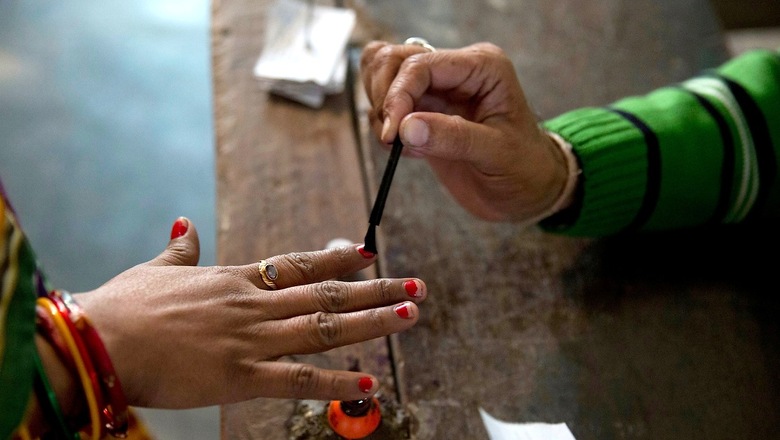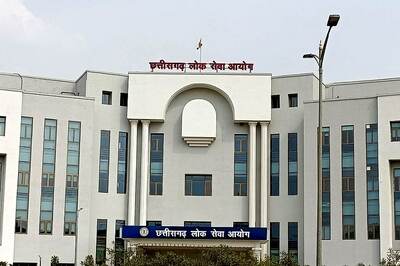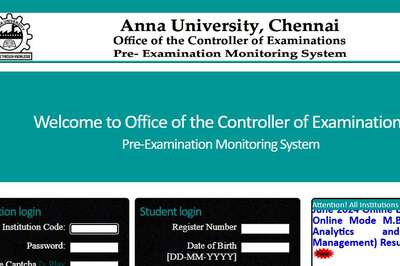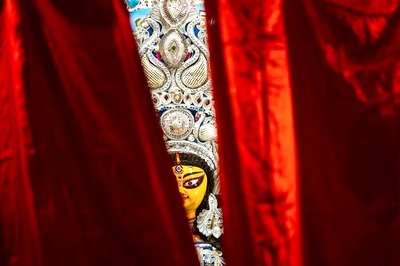
views
The Mysore Lok Sabha constituency is one of Karnataka state’s 28 parliamentary constituencies. It includes the entire Kodagu district and a portion of the Mysore district. Presently, Mysore Lok Sabha constituency comprises eight Legislative Assembly segments, with Madikeri and Virajpet in Kodagu district, and Piriyapatna, Hunsur, Chamundeshwari, Krishnaraja, Chamaraja, and Narasimharaja in Mysore district.
Current MP: Prathap Sinha of the BJP since 2014, preceded by A H Vishwanath (Congress, 2004-09)
Candidates: Yaduveer Krishnadatta Chamaraja Wadiyar (BJP), M Lakshman (Congress)
Polling Date: Phase 2; April 26, 2024
Political Dynamics
- It’s a tight contest between the BJP and the Congress here with former Congress-ally JD(S) throwing its support in favour of the BJP. The BJP won the seat in 2019 with a vote share of 52.2% against the Congress’ 41.8%. In the 2023 Assembly elections though, the BJP scored just one seat, while the Congress bagged five and JD(S) two.
- BJP Eyeing a Repeat of 2019: Three factors are aligning in favour of the BJP: Alliance with JD(S), a respected ‘royal’ candidate and a strong Modi wave.
- Alliance with JD(S): Mysore falls in the Old Mysuru region where BJP had earlier struggled to make inroads. This time around, the party has established an alliance with JD(S), with hopes to attract support from the dominant Vokkaliga community.
- JD(S) has tremendous sway among the Vokkaligas who form 15-17% of the state’s population and are concentrated in districts of south Karnataka, including Mysore, Mandya, Bengaluru (rural) Tumour, Kolar, Chikkaballapur and Chikamagalore.
- In the Mysore Lok Sabha Constituency, this alliance is going to significantly boost the BJP’s fortunes. The JD(S) holds two seats out of eight here, namely Hunsur and Chamundeshwari.
- Moreover, in the 2023 assembly elections, the JD(S) scored a significant vote share of 19.8% in the constituency, while the BJP scored 29.1% and the Congress 44.9%. So, the two parties have the potential to surpass the Congress’ vote share and convert an NDA victory here.
- BJP Fields the ‘King’: BJP has replaced its sitting MP Prathap Simha, who has been serving since 2014, with a ‘royal’ candidate. Yaduveer Krishnadatta Chamaraja Wadiyar, 32-year-old scion of the erstwhile Mysuru royal family, is making his political debut from the Mysore.
- Adopted by Pramoda Devi Wadiyar after the passing of her husband Srikantadatta Narasimharaja Wodeyar, Yaduveer was anointed as the head of the family in 2015.
- The seat was previously held by his great-uncle Srikanta Datta Narasimharaja Wadiyar, a four-term Congress MP, who lost it after switching to the BJP in the 1991 parliamentary elections.
- Yaduveer holds a degree from the University of Massachusetts and is quickly learning the intricacies of electoral politics. He is fluent in Kannada and adept at connecting with voters, has garnered solid support from both the BJP and JD(S).
- Wadiyar has also engaged with BJP leaders in the district, including sitting MP Prathap Simha and estranged party leader AH Vishwanath, who advocated for his unanimous election.
- The Congress has deemed the contest as a ‘King vs Commoner’ battle, in response to which Yaduveer says that while this perception is justified, it is not true for India and Raja Dharma is specifically about serving the society.
- The Mysuru Royals are deeply respected by the populace and the young king is seen with interest and awe. In fact, Congress leader and chief minister Siddaramaiah has instructed the party’s leaders not to use disrespectful or defamatory language against the king as it may offend the electorate.
- Prathap Simha Factor: Sitting BJP MP from Mysore, Prathap Simha, did not welcome the party’s decision to replace him with a new candidate. In an emotional outburst, he took to Facebook Live to criticise Yaduveer and accused him of only engaging with the people after emerging from his “air-conditioned chambers”.
- Simha had faced criticism for issuing passes to individuals who breached Parliament security in a significant incident in December 2023.
- However, there is more to the story as local BJP workers were reportedly displeased with him over his alleged inaccessibility.
- However, among voters, Simha is said to have palpable support without signs of anti-incumbency, which complicates matters for the BJP.
- While Yaduveer has reached out to him to allay tempers, it remains to be seen whether the BJP and the Modi factor can unite party leaders and their voters.
- Modi Factor: The Modi magic plays out strongly in Mysore, especially, during the Lok Sabha elections. National issues such as Hindutva, national security, India’s rising international stature and the Modi government’s development work has ensured a high level of popularity for PM Modi in urban areas. In urban areas too, the party will lean on its welfare schemes to seek the people’s support.
- Hindutva: Ram Mandir construction was an emotive event for the Hindu community here. The BJP’s stand on other issues raised often in state politics, such as ‘love jihad’, Hijab Ban, anti-conversion bill finds strong support from a large section of the Hindu population.
- Tipu’s Ghost: The legacy of Muslim Ruler Tipu Sultan, who ruled Mysore from 1782 to 1799, continues to be questioned by the BJP and it is a major poll issue between the BJP, which wants to end his legacy, and the Congress which wants to retain it, so as to appeal to the Muslim vote.
- BJP has also stirred up a row in nearby Kerala constituency of Wayanad where its state chief has vowed to change the name of Sultan Bathery to Ganapathivattom if elected. Wayanad is the constituency of Rahul Gandhi, and a row over Tipu there will have resonance in the entire region.
- The previous BJP government had also taken various steps to do away with Tipu Sultan’s markings in the state.
- Strengths: Ultimately, the BJP seeks to break caste lines in Hindu voting patterns in its favour as it had done in 2014 and 2019. BJP hopes for a polarisation of Hindu votes, while also relying on the Vokkaliga factor which is bolstered by its alliance with the JD(S). Ultimately, the party may even get a bump in the winning margin and total vote share. Observers say split in the Dalit vote is expected but it may still favour the BJP.
- Together, the two parties will draw extensive support from the Krishnaraja, Chamundeshwari and Hunsur assembly seats with the first being a BJP seat and the other two being under the JD(S). The BJP also finds popularity in Madikeri. And Virajpet, part of the Kodagu district. The party also is not experiencing any particular anti-incumbency and PM Modi’s charm remains powerful here, which are both significant plus points.
- Congress’ Commoner vs Maharaja: The Congress has fielded M Lakshmana, who is a state Congress spokesperson and a close aide of Siddaramaiah. Lakshmana is a Vokkaliga, and seeks to appeal to the largely agrarian community to vote for him, a commoner, against the BJP’s Maharaja candidate.
- He is also highlighting the state government’s schemes and Chief Minister Siddaramaiah’s association with Mysore to attract voters. Lakshmana is not a particularly popular or well-known face, so he has his work cut out. Vokkaliga leaders Siddaramaiah and DK Sivakumar have joined hands with Lakshmana to seek out Vokkaligas for support.
- Siddaramaiah’s Home Turf: Mysore Lok Sabha Constituency falls within the home turf of Chief Minister Siddaramaiah who comes from the Mysuru district. The Congress high command has tasked Siddaramaiah with the responsibility of securing victories in two Lok Sabha segments in the region: Mysore and Chamarajanagar.
- Siddaramaiah has been visiting the constituency repeatedly and thrown his weight behind Congress nominee M Lakshmana and clearly signalled to the electorate that voting for Lakshmana would account to voting for him, putting his name on the line to seek a victory.
- Congress’ Strengths: The Congress party is in power in the state after having defeated the BJP in 2023. In Mysore, it performed well with five seats in its kitty and had a total vote share of 44.9%. The party is expected to pull most of the Muslim vote which forms 14.3% of the total voter population.
- It is on a strong footing Chamaraja and Narasimharaja and to some extent in Madikeri and Virajpet. The Congress has tall Vokkaliga leaders. However, the party faces a major challenge in the form of a BJP-JD(S) alliance which threatens to give way to a major consolidation of Vokkaliga votes in favour of the BJP candidate.
Key Constituency Issues
- Tipu Sultan: The legacy of Tipu Sultan has resurfaced as a contentious election issue in the Mysore Lok Sabha constituency. While some view him as a valiant freedom fighter who resisted British colonialism, others criticize his policies and actions, particularly towards certain communities, the Hindus.
- Political parties in Karnataka have often used Tipu Sultan as a symbol to mobilize support along religious and ideological lines. The BJP, in particular, has been vocal in its criticism of Tipu Sultan, portraying him as a tyrant and religious bigot. They often highlight instances of alleged forced conversions and violence against Hindus and Christians during his reign. By invoking Tipu Sultan’s controversial legacy, the BJP aims to consolidate its Hindu vote base and portray itself as the protector of Hindu interests.
- On the other hand, parties like the Congress and the Janata Dal (Secular) tend to adopt a more appeasement approach. They often highlight his efforts in promoting trade, industry, and infrastructure development in Mysore and turn a blind eye to the issues raised by the right wing. By invoking Tipu Sultan’s legacy, these parties aim to appeal to a broader cross-section of voters and promote a message of inclusivity and secularism.
- The debate surrounding Tipu Sultan’s legacy has intensified in recent years, with controversies erupting over the celebration of Tipu Jayanti, a state-sponsored event commemorating his birth anniversary. The BJP has opposed the celebration, while other parties have defended it as a recognition of its historical significance. This polarization has further fuelled the debate and made Tipu Sultan a recurring election issue in the Mysore Lok Sabha constituency and other parts of Karnataka. Moreover, there was intense ruckus, when a congress MLA tried to change the name of the Mysore airport to the Tipu Sultan airport in 2023. While the legislation was passed, it drew intense criticism from the BJP and goes to show the hardened stance by both the parties in regard to Tipu Sultan.
- Hijab ban: The hijab ban, initially implemented in educational institutions by the previous BJP government in Karnataka, has emerged as a significant point of contention in the Mysore Lok Sabha elections. This controversial issue has sparked debates about religious freedom, uniformity in educational spaces, and the role of identity politics in electoral campaigns.
- The BJP staunchly defended the hijab ban, arguing that it was necessary to maintain uniformity and discipline within educational institutions. They accused the Congress of engaging in “appeasement politics” by considering lifting the ban, suggesting that such a move would create divisions among students and disrupt the secular fabric of educational spaces.
- The BJP also highlighted the legal aspects of the issue, emphasizing that the matter was still pending before the Supreme Court. In contrast, the Congress, under Chief Minister Siddaramaiah, initially indicated a willingness to overturn the hijab ban. They argued that personal choices regarding attire and religious expression should be respected, and that the ban infringed upon the fundamental rights of Muslim women. However, facing backlash from the BJP and right-wing groups, the Congress did a volte face and justified that the reversal of hijab ban was still under consideration.
- The Mandir-Masjid Issue: The recent surge in communal tensions surrounding religious sites in the Mysore region, particularly in Mandya district, has raised concerns about the spread of such incidents beyond Karnataka’s coastal belt. These disputes, often centred around claims of historical injustices and attempts to reclaim religious spaces, have added a new dimension to the political landscape of the region, traditionally dominated by caste-based politics.
- One prominent example is the controversy surrounding the Masjid-e-Ala in Srirangapatna. Right-wing Hindu activists claimed that the mosque was built on the site of a demolished Hanuman temple, demanding permission for Hindus to offer prayers there. While the matter remains unresolved, it has fuelled communal tensions and become a rallying point for Hindutva groups.
- Similarly, the staging of plays based on the book Tipu Nijakanasugalu (Real Dreams of Tipu) has contributed to the controversy. The play’s claims that Tipu Sultan was assassinated by two Vokkaliga chieftains, rather than the British, have been seen as an attempt to portray Tipu Sultan as a “Muslim ruler” and appeal to Vokkaliga sentiments. This narrative aligns with the broader Hindutva agenda of highlighting historical grievances and portraying Muslim rulers as oppressors.
- The recent incident in Keragodu in 2022, where a Hanuman flag was replaced with the Tricolour, further exemplifies the escalating tensions. The BJP has accused the Congress government of being “anti-Hindu” and has used the incident to mobilize support. The JD(S), in a shift from its earlier stance, has joined the BJP in protesting the flag replacement, indicating a potential political realignment in the region.
- Anti-Conversion bill: The Anti-Conversion Bill was passed by the BJP state government in Karnataka under the State’s Protection of Right to Freedom of Religion Act, 2022. It was one of the most controversial legislations ushered in during the previous BJP regime. The Congress government in Karnataka after its victory, in a bid to fulfil its poll promise, announced its repeal in 2023. The issue continues to burn in the Lok sabha elections.
- Those in favour of the bill emphasize the need to curb forced conversions, arguing that vulnerable populations, often the ST’s, SC’s and Dalits are often coerced or induced into changing their religion through deceptive means or financial incentives. They believe the bill is crucial for protecting religious harmony and preventing aggressive proselytization tactics that can create animosity between communities. According to them religious conversion has nothing to do with faith; it has to do with vote-banks. The Congress party, opposing it, passed a similar Bill in Himachal Pradesh when they were in power in that state.
- However, opponents of the bill, primarily the Christian leaders have raised concerns about its potential misuse and the infringement upon religious freedom. They fear that the vague language and broad definitions within the bill leave room for arbitrary interpretation and selective enforcement, potentially leading to harassment and discrimination against minority communities. They argue that individuals have the fundamental right to choose and practice their faith without state interference, and that the bill’s restrictions on conversion violate this basic right.
- Water scarcity: Mysore is facing a growing water scarcity crisis, with residents in both urban and rural areas experiencing disruptions in water supply. The situation is particularly dire in the city, where water levels in the Krishnaraja Sagar (KRS) and Kabini dams, the primary sources of drinking water, have plummeted due to weak monsoon rains and increased water release. This has forced the Vani Vilas Water Works, the city’s water supply authority, to implement alternate-day water supply schedules in several wards.
- The situation is further compounded by the city’s aging water distribution system, which suffers from leakages and inefficiencies, leading to significant water loss. Private layouts on the outskirts of the city are particularly vulnerable, as they rely heavily on borewells, which are also experiencing declining water levels. The Mysore City Corporation (MCC) is exploring measures to mitigate the crisis, including roping in private borewells and water tankers to supplement the dwindling supply.
- Rural areas of Mysore are also grappling with water scarcity, with the Zilla Panchayat identifying 134 villages that are likely to face a full-blown crisis in the coming months. Many of these villages rely on borewells, which are susceptible to drying up as the groundwater table recedes. The Zilla Panchayat has developed a contingency plan, including identifying alternative water sources and preparing for tanker-based water supply if necessary.
- Civic Issues: Mysore, despite its reputation for cleanliness and beauty, faces several significant civic issues that impact the daily lives of its residents. The condition of the roads is a major concern, with numerous potholes and unevenly laid pavement blocks posing hazards to both motorists and pedestrians. This is particularly dangerous after dusk when visibility is reduced.
- Another pressing issue is the unsanitary conditions around vegetable markets. Vendors often leave behind rotting vegetables, attracting stray cattle and creating a nuisance for residents. The accumulation of garbage contributes to mosquito breeding and insect infestations, posing a health hazard to the community. This problem extends beyond the markets, with garbage heaps found throughout the city.
- Adding to the challenges is the persistent monkey menace. Monkeys from the vicinity of JSS Hospital frequently enter residential areas, causing disturbances and posing a threat to residents’ safety.
- Traffic management is another area of concern. Reckless driving by motorists, auto-rickshaws, and motorcyclists leads to frequent accidents. Enforcing stricter traffic regulations, including heavy fines for violations such as speeding and driving on the wrong side of the road, is crucial for improving road safety. Additionally, ensuring proper functioning of streetlights on all roads after dusk is essential for enhancing visibility and reducing accidents.
- Crumbling of Chamundi Hills: Chamundi Hills, a cherished landmark near Mysore, faces environmental threats due to excessive construction. Landslides, attributed to disrupted water sources and soil instability, have raised concerns. Experts recommend ecological restoration and improved drainage systems.
- Concerned citizens and environmental groups in Mysore have been actively advocating for the protection and sustainable development of Chamundi Hills. A successful online petition garnered over 80,000 signatures, forcing the government to reconsider its plans for helicopter tourism that involved cutting down hundreds of trees at the foot of the hills.
- Another online petition, initiated by the group “Mysoreans for Saving Mysore,” has gathered significant support, urging authorities to halt further construction, remove illegal buildings, restrict vehicular movement, and promote the use of electric buses. The petition also calls for the establishment of a dedicated Chamundi Hill Development Authority to ensure that all stakeholders have a say in the hill’s future.
Voter Demographics
Total Voters: 1894379
Urban Voters: 51.6%
Rural Voters: 48.4%
Social Composition
SC: 13.9%
ST: 9.3%
Religious Composition
Hindu: ~86%
Muslim: 14.3%
Christians: 1.3%
Jain: 0.38%
Buddhist: 0.41%
Infrastructural Development
- Peripheral Ring Road: The Peripheral Ring Road is expected to have a six-lane carriageway flanked by service roads on either side, and clusters for IT and BT, educational and health, hardware and software, pharmaceuticals, garments and apparels, besides a heritage living and sports village between the existing the existing Outer Ring Road and the Peripheral Ring Road. This will help in addressing the traffic congestion issues in Mysore which has become a pain for the locals.
- Rail Overbridges: The construction of railway overbridges at Kukkarahalli lake and KRS road in Mysuru is underway. While one railway overbridge is expected to come at the level crossing on the KRS road near Outer Ring Road, the other is proposed on the road leading to Bogadi Road from Kautilya Circle near Crawford Hall in the city. The cost of the projects is expected to share between the Ministry of Railways and Government of Karnataka.
- Mysore Airport Expansion: The lengthening of Mysuru Airport’s runway to 2,750 by 45 metres (9,022 ft 148 ft) as part of the second phase of expansion will be a game changer. This advancement is critical because it will allow larger jet aircraft, such as the Boeing 737 and Airbus A320, to land, resulting in increased connectivity for the region.
- Multi-Modal Logistics Park: The Rs.102 crore Multi-Modal Logistics Park (MMLP) or Inland Container Yard (ICD) or Railway Goods Shed at Kadakola in Nanjangud was built by the Container Corporation of India (CONCOR). Built in an area of 55 acres, the project is ready for domestic rail operations. MMLP is well-equipped with an independent goods train terminal and a dedicated rail line. This infrastructure has been specifically designed to ensure the seamless and efficient movement of goods in and out of the logistics park. The integration of this strategic feature is geared towards enhancing the overall appeal of the project, especially for exporters. It is expected to reduce transportation costs, stimulate merchandise activities, and contribute to the industrial development of the region. The facility will include a cold storage unit and provisions for Customs clearances for both export and import cargo. Currently, industrialists in the Mysuru region obtain Customs clearance at ports, but with this facility, these services will be conveniently available at their doorstep, according to sources.
- Software Technology Parks of India: STPIs have been established at five locations in Karnataka; Electronics City, Bengaluru and sub-centres in Mysuru, Hubballi, Mangaluru and Manipal. Built at a cost of Rs. 27.64 crore, the three-storey, 40,000 square feet building offers 110 plug-and-play seats, along with 6,500 square feet of semi-furnished raw space featuring a data centre, server room, and network operation centre for high-speed data communication. It also includes a 100-seater auditorium, conference hall, discussion rooms and a cafeteria. STPI Mysuru aims to promote software and software services development and export, manage infrastructure resources, and provide statutory and promotional services to exporters.
- Remodelled Ashokapuram Railway Station: The yard remodelling works at Ashokapuram Railway Station is complete. SWR has undertaken these works at an estimated cost of Rs. 30.42 crore. Provisions have been made for three extra two-platform lines, supplementing the existing three lines and introducing new platforms 4 and 5. Platform 1’s current length will increase by 87.5 metres, and platforms 2 and 3 will extend by 57.5 metres. The existing foot-over-bridge, connecting platforms 1, 2 and 3, is being extended to link with new platforms 4 and 5, facilitating access to the outer areas towards Srirampura.
- Maharani’s Women’s Science College: It will be constructed at a cost of Rs 54 crore while Rs 116 crore will be spent on constructing a hostel for Maharani’s Arts and Commerce College. The allocation of Rs 54 crore for the science wing is noteworthy as a portion of the Science College on the JLB Road had collapsed in 2022 and had reduced the chemistry laboratory to rubbles.
Stay Ahead With all the Lok Sabha Election 2024 Related Real-Time Updates At News18 Website.




















Comments
0 comment